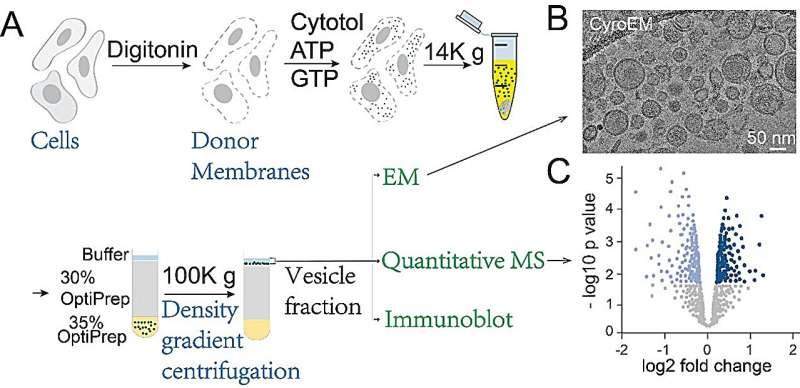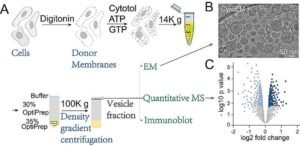Catalyzing Change: Antibiotic Stewardship in Nigeria’s Healthcare Landscape
Catalyzing Change: Antibiotic Stewardship in Nigeria’s Healthcare Landscape
Introduction
Antibiotic resistance presents a formidable challenge to global healthcare systems, with Nigeria facing its own set of complexities in combating this issue. Defined as bacteria’s ability to resist the effects of antibiotics, resistance undermines treatment efficacy, leading to prolonged illnesses and increased healthcare costs.
 This article aims to explore the concept of antibiotic stewardship and its critical role in addressing antibiotic resistance in Nigeria. By understanding stewardship principles and implementing evidence-based strategies, healthcare professionals, policymakers, and the public can collectively contribute to preserving antibiotic effectiveness.
This article aims to explore the concept of antibiotic stewardship and its critical role in addressing antibiotic resistance in Nigeria. By understanding stewardship principles and implementing evidence-based strategies, healthcare professionals, policymakers, and the public can collectively contribute to preserving antibiotic effectiveness.
Join us in navigating the complexities of antibiotic stewardship, working towards safeguarding public health and fostering sustainable healthcare practices in Nigeria and beyond.
Understanding Antibiotic Resistance
Antibiotic resistance, a concerning phenomenon in modern medicine, refers to the ability of bacteria to withstand the effects of antibiotics designed to kill or inhibit their growth. This resistance arises primarily through the evolutionary processes of natural selection, where bacteria with genetic mutations that confer resistance to antibiotics survive and proliferate while susceptible strains are eliminated.
The mechanisms behind antibiotic resistance are diverse and multifaceted. Bacteria may develop resistance through various mechanisms, including:
- Genetic Mutation: Bacteria can acquire mutations in their genetic material, resulting in alterations to essential cellular components targeted by antibiotics. These mutations may render antibiotics ineffective in inhibiting bacterial growth or killing the bacteria outright.
- Horizontal Gene Transfer: Bacteria have the ability to exchange genetic material with other bacteria through processes such as conjugation, transformation, and transduction. This transfer of resistance genes between bacterial strains enables the rapid spread of antibiotic resistance within bacterial populations.
 The impact of antibiotic misuse and overuse on resistance cannot be overstated. Inappropriate use of antibiotics, including their unnecessary prescription for viral infections or incomplete courses of treatment, exerts selective pressure on bacteria, favoring the survival and proliferation of resistant strains.
The impact of antibiotic misuse and overuse on resistance cannot be overstated. Inappropriate use of antibiotics, including their unnecessary prescription for viral infections or incomplete courses of treatment, exerts selective pressure on bacteria, favoring the survival and proliferation of resistant strains.
In Nigeria, as in many other countries, antibiotic misuse and overuse are prevalent due to various factors, including inadequate regulation of antibiotic distribution, patient demand for antibiotics, and healthcare provider prescribing practices. This misuse contributes to the emergence and spread of antibiotic-resistant bacteria, posing significant challenges to infection control and treatment outcomes.
Prevalent antibiotic-resistant bacteria in Nigeria include strains such as:
- Methicillin-resistant Staphylococcus aureus (MRSA)
- Extended-spectrum beta-lactamase (ESBL)-producing Enterobacteriaceae
- Multidrug-resistant tuberculosis (MDR-TB)
- Carbapenem-resistant Enterobacteriaceae (CRE)
These bacteria pose formidable threats to public health, as infections caused by resistant strains are often more difficult to treat and may result in prolonged hospital stays, increased healthcare costs, and higher mortality rates.
The Importance of Antibiotic Stewardship
Antibiotic stewardship encompasses a set of principles and practices aimed at optimizing the use of antibiotics to ensure effective treatment while minimizing the development of antibiotic resistance and reducing adverse effects associated with their use.
Central to antibiotic stewardship is the recognition of antibiotics as precious resources that must be preserved for future generations. The principles of antibiotic stewardship include:
- Optimizing Antibiotic Selection: Healthcare providers must carefully select antibiotics based on factors such as the type of infection, local antimicrobial resistance patterns, and patient-specific factors. Choosing the most appropriate antibiotic helps maximize efficacy while minimizing the risk of resistance.
- Ensuring Appropriate Antibiotic Dosage and Duration: Antibiotics should be prescribed at the correct dosage and for the appropriate duration to achieve optimal therapeutic outcomes. Shorter courses of antibiotics, when clinically appropriate, help reduce the risk of resistance and minimize adverse effects.
- Preventing Antibiotic Overuse and Misuse: Healthcare providers play a crucial role in preventing the unnecessary use of antibiotics, particularly for viral infections where antibiotics are ineffective. Patient education and communication are essential to manage expectations and discourage antibiotic misuse.
- Monitoring and Surveillance: Regular monitoring of antimicrobial prescribing practices and resistance patterns is essential to identify trends, detect emerging resistance, and guide intervention strategies. Surveillance data help inform antibiotic prescribing guidelines and support evidence-based decision-making.
Antibiotic stewardship is integral to patient care, as it promotes optimal treatment outcomes while minimizing the risk of adverse effects associated with antibiotic use. By adhering to stewardship principles, healthcare providers can help prevent the spread of antibiotic-resistant infections, reduce healthcare-associated complications, and improve patient safety.
 Beyond its impact on individual patient care, antibiotic stewardship has broader economic and societal implications. The unchecked rise of antibiotic resistance poses significant economic burdens on healthcare systems, including increased healthcare costs due to prolonged hospitalizations, additional diagnostic testing, and the need for more expensive second-line antibiotics.
Beyond its impact on individual patient care, antibiotic stewardship has broader economic and societal implications. The unchecked rise of antibiotic resistance poses significant economic burdens on healthcare systems, including increased healthcare costs due to prolonged hospitalizations, additional diagnostic testing, and the need for more expensive second-line antibiotics.
Moreover, antibiotic resistance threatens to undermine the achievements of modern medicine, jeopardizing the effectiveness of routine medical procedures such as surgery, chemotherapy, and organ transplantation. The emergence of multidrug-resistant infections complicates treatment regimens and limits therapeutic options, leading to higher morbidity and mortality rates.
On a societal level, antibiotic resistance compromises public health and undermines social and economic development. Resistant infections can spread within communities and healthcare settings, posing challenges to infection control and public health measures. The loss of effective antibiotics threatens to unravel decades of progress in the control of infectious diseases and jeopardizes global health security.
Factors Contributing to Antibiotic Abuse
In low- and middle-income countries (LMICs) like Nigeria, the misuse and overuse of antibiotics are pervasive issues exacerbated by various factors, including the availability of over-the-counter antibiotics, the proliferation of hawked antibiotics, and the prevalence of fake or substandard medications. Understanding the complex interplay of these factors is essential for developing targeted interventions to address antibiotic abuse effectively.
- Easy Access to Over-the-Counter Antibiotics: In many LMICs, including Nigeria, antibiotics are readily available without a prescription from pharmacies, drug vendors, and informal markets. This easy accessibility enables self-medication and contributes to antibiotic misuse, as individuals may use antibiotics inappropriately for minor illnesses or without proper guidance from healthcare professionals.
- Proliferation of Hawked Antibiotics: Street vendors and hawkers often sell antibiotics and other medications in open markets, bypassing regulatory controls and quality assurance measures. These hawked antibiotics may be improperly stored, expired, or counterfeit, posing significant risks to consumers and contributing to the emergence of antibiotic resistance.
- Presence of Fake or Substandard Medications: The circulation of counterfeit or substandard antibiotics in LMICs presents a significant challenge to antibiotic stewardship efforts. Substandard medications may contain insufficient active ingredients or contaminants, rendering them ineffective or potentially harmful. Patients unknowingly consuming these medications may experience treatment failure, adverse reactions, or the development of antibiotic resistance.
- Cultural and Societal Influences: Cultural beliefs and societal norms play a significant role in shaping healthcare-seeking behaviors and antibiotic use practices in LMICs. Traditional remedies, herbal medicines, and cultural practices may influence individuals’ perceptions of illness and treatment preferences, leading to the underutilization of conventional medical services and the overreliance on antibiotics.
- Healthcare System Challenges: Weak healthcare infrastructure, inadequate regulation, and limited access to quality healthcare services further exacerbate antibiotic misuse and overuse in LMICs. Healthcare providers may face challenges in accurately diagnosing infections, prescribing appropriate antibiotics, and monitoring treatment outcomes due to resource constraints, limited diagnostic capabilities, and gaps in healthcare delivery systems.
Addressing antibiotic abuse in LMICs requires a multifaceted approach that involves collaboration between governments, regulatory agencies, healthcare providers, community leaders, and the public. Strategies should focus on: 
- Strengthening regulatory frameworks to restrict the sale of antibiotics without a prescription and enforce quality standards for medications.
- Enhancing public awareness campaigns to educate communities about the risks of antibiotic misuse, the importance of seeking medical advice, and the proper use of antibiotics.
- Empowering healthcare providers with training and resources to promote rational antibiotic prescribing practices, including adherence to clinical guidelines and judicious use of antibiotics.
- Promoting research and surveillance efforts to monitor antibiotic resistance patterns, identify emerging threats, and guide evidence-based interventions.
By addressing the underlying factors contributing to antibiotic abuse in LMICs, stakeholders can work together to preserve the effectiveness of antibiotics, mitigate the spread of antibiotic resistance, and improve healthcare outcomes for populations worldwide.
Strategies for Implementing Antibiotic Stewardship
Implementing effective antibiotic stewardship programs is crucial for combating antibiotic resistance and promoting responsible antibiotic use. These programs encompass a range of strategies aimed at optimizing antibiotic prescribing practices, enhancing patient outcomes, and preserving the effectiveness of antibiotics for future generations.
- Essential Components of Antibiotic Stewardship Programs:
- Antibiotic Guidelines and Protocols: Developing evidence-based guidelines and protocols for antibiotic prescribing ensures consistency and standardization in clinical practice. These guidelines should encompass recommendations for antibiotic selection, dosing, duration of therapy, and de-escalation strategies.
- Antibiotic Monitoring and Surveillance: Implementing robust surveillance systems to monitor antibiotic prescribing patterns, antimicrobial resistance trends, and healthcare-associated infections facilitates early detection of resistance emergence and informs intervention strategies.
- Antibiotic Review and Feedback: Regular review of antibiotic prescribing practices and provision of feedback to healthcare providers promote accountability and facilitate continuous quality improvement. Feedback mechanisms allow for the identification of opportunities for optimization and the dissemination of best practices.
- Multidisciplinary Collaboration: Engaging multidisciplinary teams comprising physicians, pharmacists, microbiologists, infection prevention specialists, and hospital administrators fosters collaboration and ensures a holistic approach to antibiotic stewardship. Collaboration across healthcare settings promotes continuity of care and enhances patient outcomes.
 Role of Healthcare Professionals in Promoting Appropriate Antibiotic Use:
Role of Healthcare Professionals in Promoting Appropriate Antibiotic Use:
-
- Clinical Decision Support Systems: Integration of clinical decision support systems into electronic health records facilitates real-time access to evidence-based guidelines, antimicrobial susceptibility data, and patient-specific factors, empowering healthcare providers to make informed antibiotic prescribing decisions.
- Antibiotic Prescribing Education: Providing ongoing education and training to healthcare professionals on antibiotic resistance, stewardship principles, and appropriate antibiotic use enhances their knowledge and awareness. Continuing education programs should emphasize the importance of individual responsibility in preserving antibiotic effectiveness.
- Antimicrobial Stewardship Champions: Appointing antimicrobial stewardship champions within healthcare facilities serves as a catalyst for driving stewardship initiatives and fostering a culture of accountability. These champions advocate for stewardship principles, coordinate implementation efforts, and serve as resources for their colleagues.
- Importance of Education and Awareness Campaigns:
- Public Awareness Campaigns: Launching public awareness campaigns to educate patients, caregivers, and the general public about the appropriate use of antibiotics, the risks of antibiotic resistance, and the importance of completing prescribed courses of treatment fosters informed decision-making and behavior change.
- Healthcare Provider Education: Offering educational resources and training programs to healthcare providers on antibiotic stewardship principles, antimicrobial resistance, and infection prevention strategies empowers them to serve as advocates for responsible antibiotic use within their communities.
- Community Engagement Initiatives: Engaging community stakeholders, including schools, religious institutions, and local leaders, in antibiotic stewardship efforts promotes grassroots involvement and facilitates the dissemination of accurate information about antibiotic use and resistance.
A case example
In Nigeria, where the challenges of antibiotic misuse and resistance are prevalent, several successful antibiotic stewardship initiatives have been implemented to address these issues. These initiatives serve as exemplars of effective stewardship practices, highlighting the impact of proactive interventions in LMIC settings. In tertiary hospitals across Nigeria, hospital-based antibiotic stewardship programs have been established to optimize antibiotic use and combat resistance. These programs typically involve multidisciplinary teams of infectious disease specialists, pharmacists, microbiologists, and hospital administrators working collaboratively to implement stewardship interventions.
 At a teaching hospital in Lagos, a comprehensive antibiotic stewardship program was implemented to improve antibiotic prescribing practices and reduce resistance rates. Through initiatives such as antibiotic restriction policies, preauthorization requirements for selected antibiotics, and regular audit and feedback sessions, the hospital achieved significant reductions in inappropriate antibiotic use and observed declines in antibiotic resistance rates among key pathogens.
At a teaching hospital in Lagos, a comprehensive antibiotic stewardship program was implemented to improve antibiotic prescribing practices and reduce resistance rates. Through initiatives such as antibiotic restriction policies, preauthorization requirements for selected antibiotics, and regular audit and feedback sessions, the hospital achieved significant reductions in inappropriate antibiotic use and observed declines in antibiotic resistance rates among key pathogens.
Challenges faced during the implementation of antibiotic stewardship initiatives in LMICs include limited resources, infrastructure constraints, and competing healthcare priorities. Additionally, cultural beliefs, socioeconomic factors, and patient expectations may influence the success of stewardship efforts, necessitating tailored approaches to address local contexts.
Despite these challenges, successful stewardship programs have demonstrated tangible benefits, including improved patient outcomes, reduced healthcare costs, and preservation of antibiotic effectiveness. By fostering collaboration, innovation, and sustained commitment, LMICs can continue to make strides in antibiotic stewardship and combat the global threat of antibiotic resistance.
The Role of Different Stakeholders in Antibiotic Stewardship
Antibiotic stewardship requires coordinated efforts from various stakeholders, each contributing unique perspectives and responsibilities to combat antibiotic resistance and promote responsible antibiotic use. Here is an overview of the roles played by healthcare providers, policymakers, regulatory bodies, clinical microbiologists, and patients in antibiotic stewardship, along with the importance of collaborative efforts on both national and global scales.
- Healthcare Providers: Healthcare providers, including physicians, pharmacists, nurses, and clinical microbiologists, are pivotal in implementing antibiotic stewardship practices. Their roles include:
- Prescribing antibiotics judiciously based on evidence-based guidelines, microbial susceptibility data, and patient-specific factors.
- Conducting timely diagnostic tests, including microbiological cultures and sensitivity testing, to guide antibiotic selection and optimize treatment outcomes.
- Participating in antimicrobial stewardship committees or teams to develop local guidelines, monitor antibiotic use, and provide education to healthcare staff.
- Policymakers: Policymakers are responsible for establishing regulations and policies that support antibiotic stewardship efforts at national and international levels. Their roles include:
- Developing and implementing policies to regulate antibiotic prescribing practices, promote antimicrobial stewardship programs, and prevent the spread of antibiotic resistance.
- Allocating funding and resources for research, surveillance, and public awareness campaigns focused on antibiotic resistance and stewardship.
- Collaborating with stakeholders across sectors to develop integrated strategies for antimicrobial resistance containment and control.
- Regulatory Bodies: Regulatory bodies, such as drug regulatory agencies and public health authorities, oversee the safety, efficacy, and quality of antibiotics and other antimicrobial agents. Their responsibilities include:
- Enforcing regulatory standards for antibiotic manufacturing, distribution, and marketing to ensure product quality and authenticity.
- Monitoring antibiotic resistance trends through surveillance systems and laboratory networks, and disseminating information to healthcare providers and the public.
- Reviewing and approving new antibiotics and diagnostic tests to address emerging resistance patterns and diagnostic challenges.
- Clinical Microbiologists: Clinical microbiologists play a critical role in antibiotic stewardship by providing laboratory support for the diagnosis and management of infectious diseases. Their contributions include:
- Performing microbiological tests to identify pathogens and determine their susceptibility to antibiotics.
- Interpreting laboratory results and providing timely guidance to healthcare providers regarding appropriate antibiotic therapy.
- Participating in antimicrobial stewardship activities, such as antimicrobial susceptibility surveillance and quality improvement initiatives.
- Patients: Patients and their caregivers are essential partners in antibiotic stewardship efforts. Their roles include:
- Seeking medical care from qualified healthcare providers for appropriate diagnosis and treatment of infections.
- Following prescribed antibiotic regimens as directed, including dosage and duration of therapy, to maximize treatment efficacy and minimize the risk of resistance.
- Practicing preventive measures, such as hand hygiene and vaccination, to reduce the spread of infectious diseases and limit the need for antibiotics.
Future Directions and Conclusion
As the global threat of antibiotic resistance continues to escalate, the field of antibiotic stewardship is evolving to address emerging challenges and opportunities. Clinical microbiologists, alongside other stakeholders, play a pivotal role in shaping the future of antibiotic stewardship through innovation, collaboration, and advocacy. 
Exploring Emerging Trends and Innovations in Antibiotic Stewardship:
Rapid Diagnostic Tests: The development of rapid molecular diagnostic tests enables healthcare providers to identify pathogens and determine antibiotic susceptibility more quickly, allowing for targeted and personalized antibiotic therapy.
Precision Medicine Approaches: Advances in genomic sequencing and microbial genomics offer insights into the genetic mechanisms of antibiotic resistance, facilitating the development of tailored treatment strategies and novel antimicrobial agents.
Digital Health Technologies: Digital health platforms and telemedicine solutions empower healthcare providers to deliver antimicrobial stewardship interventions remotely, improving access to expert guidance and facilitating real-time antibiotic decision-making.
Calling for Continued Efforts and Collaboration to Combat Antibiotic Resistance:
Multisectoral Collaboration: Collaboration across healthcare, public health, veterinary, environmental, and agricultural sectors is essential for addressing the complex drivers of antibiotic resistance and implementing holistic solutions.
Global Partnerships: Strengthening international collaborations and partnerships, such as the Global Antimicrobial Resistance Surveillance System (GLASS) and the Tripartite Collaboration between the World Health Organization (WHO), Food and Agriculture Organization (FAO), and World Organisation for Animal Health (OIE), fosters knowledge exchange, capacity-building, and coordinated action on a global scale.
Sustainable Financing: Securing sustainable funding streams for antibiotic stewardship initiatives, research, and surveillance activities is critical for ensuring long-term success in combating antibiotic resistance and safeguarding public health.
Reinforcing Key Messages and Encouraging Action:
Preserve Antibiotics for Future Generations: Antibiotics are precious resources that must be preserved through responsible use, stewardship practices, and conservation efforts to ensure their effectiveness for future generations.
Empower Patients and Communities: Education and awareness campaigns empower patients and communities to make informed decisions about antibiotic use, advocate for policy changes, and participate in stewardship efforts at the grassroots level.
Champion Antibiotic Stewardship: Healthcare providers, policymakers, regulatory bodies, clinical microbiologists, and patients must collaborate as stewards of antibiotics, embracing stewardship principles, advocating for policy changes, and championing efforts to combat antibiotic resistance.
In conclusion, the future of antibiotic stewardship hinges on the collective commitment and action of stakeholders worldwide. By embracing innovation, fostering collaboration, and advocating for change, we can mitigate the threat of antibiotic resistance, protect public health, and ensure the continued efficacy of antibiotics for generations to come.
It is imperative that we remain vigilant, proactive, and resilient in the face of antibiotic resistance, recognizing that our collective efforts today will shape the future of healthcare tomorrow.
Together, let us rise to the challenge and be stewards of a world where antibiotics remain effective, infections are controlled, and lives are saved.
References
1. Morehead, M. S., & Scarbrough, C. (2018). Emergence of Global Antibiotic Resistance. Prim. Care – Clin. Off. Pract., 45(3), 467–484. https://doi.org/10.1016/j.pop.2018.05.006
2. Iregbu, K. C., Nwajiobi-Princewill, P. I., Medugu, N., Umeokonkwo, C. D., Uwaezuoke, N. S., Peter, Y. J., Nwafia, I. N., Elikwu, C., Shettima, S. A., Suleiman, M. R., Awopeju, A. T. O., Udoh, U., Adedosu, N., Mohammed, A., Oshun, P., Ekuma, A., Manga, M. M., Osaigbovo, I. I., Ejembi, C. J., … Oduyebo, O. O. (2021). Antimicrobial Stewardship Implementation in Nigerian Hospitals: Gaps and Challenges. African J. Clin. Exp. Microbiol., 22(1), 60–66. https://doi.org/10.4314/ajcem.v22i1.8
3. Aiken, A. M., Rehman, A. M., de Kraker, M. E. A., Madrid, L., Kebede, M., Labi, A.-K., Obeng-Nkrumah, N., Nyamwaya, B., Kagucia, E., Cocker, D., Kawaza, K., Lester, R., Iregbu, K. C., Medugu, N., Nwajiobi-Princewill, P. I., Dramowski, A., Sonda, T., Hemed, A., Fwoloshi, S., … Nakazwe, R. (2023). Mortality associated with third-generation cephalosporin resistance in Enterobacterales bloodstream infections at eight sub-Saharan African hospitals (MBIRA): a prospective cohort study. Lancet. Infect. Dis. https://doi.org/10.1016/S1473-3099(23)00233-5
4. Medugu, N., Tickler, I. A., Duru, C., Egah, R., James, A. O., Odili, V., Hanga, F., Olateju, E. K., Jibir, B., Ebruke, B. E., Olanipekun, G., Tenover, F. C., & Obaro, S. K. (2023). Phenotypic and molecular characterization of beta-lactam resistant Multidrug-resistant Enterobacterales isolated from patients attending six hospitals in Northern Nigeria. Sci. Rep., 13(1). https://doi.org/10.1038/S41598-023-37621-Z
5. Medugu, N., Nwajiobi-Princewill, P. I., Shettima, S. A., Mohammed, M. M., Mohammed, Y., Wariso, K., Akujobi, C. N., Oduyebo, O. O., & Iregbu, K. C. (2021). A mini- national surveillance study of resistance profiles of Staphylococcus Aureus isolated from clinical specimens across hospitals in Nigeria. Niger. J. Clin. Pract., 24(2), 225–232. https://doi.org/10.4103/NJCP.NJCP_296_20
6. Saleem, Z., Godman, B., Cook, A., Khan, M. A., Campbell, S. M., Seaton, R. A., Siachalinga, L., Haseeb, A., Amir, A., Kurdi, A., Mwita, J. C., Sefah, I. A., Opanga, S. A., Fadare, J. O., Ogunleye, O. O., Meyer, J. C., Massele, A., Kibuule, D., Kalungia, A. C., … Moore, C. E. (2022). Ongoing Efforts to Improve Antimicrobial Utilization in Hospitals among African Countries and Implications for the Future. Antibiotics, 11(12). https://doi.org/10.3390/ANTIBIOTICS11121824
7. Abubakar, U. (2020). Antibiotic use among hospitalized patients in northern Nigeria: A multicenter point-prevalence survey. BMC Infect. Dis., 20(1). https://doi.org/10.1186/S12879-020-4815-4
8. Al-Mustapha, A. I., Adetunji, V. O., & Heikinheimo, A. (2020). Risk perceptions of antibiotic usage and resistance: a cross-sectional survey of poultry farmers in Kwara State, Nigeria. Antibiotics, 9(7), 1–10. https://doi.org/10.3390/antibiotics9070378













Post Comment